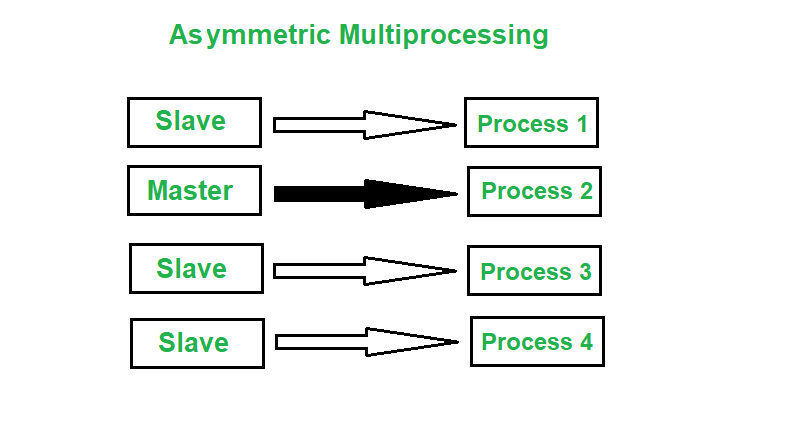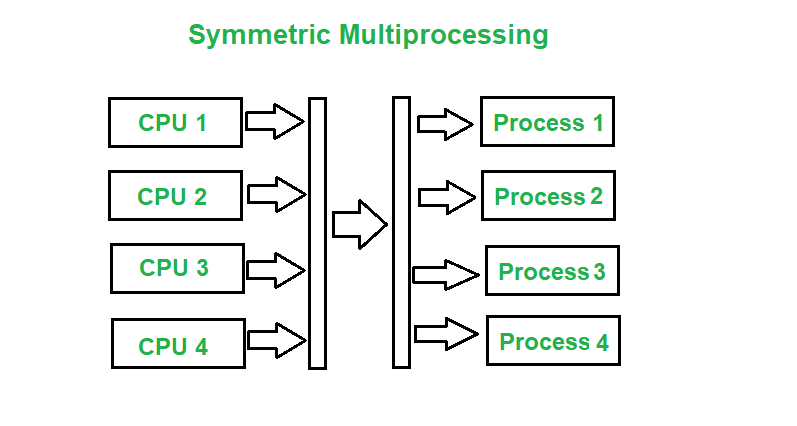多处理是在单个计算机系统中使用两个或多个中央处理单元。非对称多处理和对称多处理是两种类型的多处理。
非对称多处理:
非对称多处理系统是一种多处理器计算机系统,其中并非所有多个互连的中央处理单元 (CPU) 都得到同等对待。在非对称多处理中,只有一个主处理器运行操作系统的任务。
例如,AMP 可用于根据任务完成的优先级和重要性将特定任务分配给 CPU。

对称多处理:
它涉及多处理器计算机硬件和软件架构,其中两个或多个相同的处理器连接到一个共享的主内存,可以完全访问所有输入和输出设备,换句话说,对称多处理是一种多处理,其中每个处理器都自我调度。
例如,SMP 将多个处理器应用于这一问题,称为并行编程。

非对称和对称多处理之间的区别:
| Asymmetric Multiprocessing | Symmetric Multiprocessing |
|---|---|
| In asymmetric multiprocessing, the processors are not treated equally. | In symmetric multiprocessing, all the processors are treated equally. |
| Tasks of the operating system are done by master processor. | Tasks of the operating system are done individual processor |
| No Communication between Processors as they are controlled by the master processor. | All processors communicate with another processor by a shared memory. |
| In asymmetric multiprocessing, process are master-slave. | In symmetric multiprocessing, the process is taken from the ready queue. |
| Asymmetric multiprocessing systems are cheaper. | Symmetric multiprocessing systems are costlier. |
| Asymmetric multiprocessing systems are easier to design | Symmetric multiprocessing systems are complex to design |